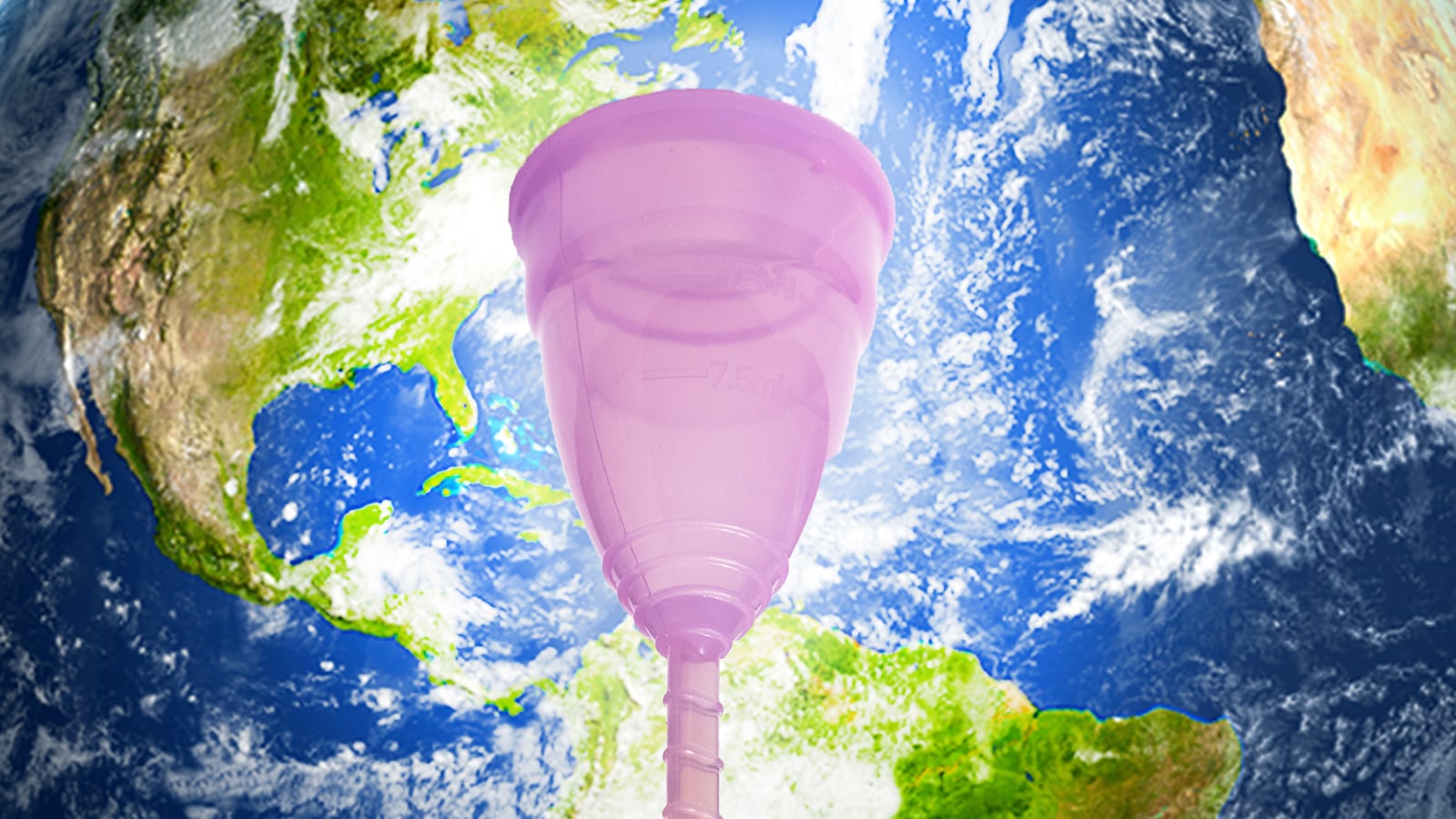For all the ways to save the environment that are proposed, there’s one that’s surprisingly cost efficient, and easier than taking caps off water bottles or planting trees: the menstrual cup.
The cousin of tampons has been around for 80 years but rarely used by the world’s women. Maybe all it needs is more environmental consciousness.
“I think a lot of people don’t know about them, or they seem scary, still,” zero waste blogger Lauren Singer told The Daily Beast. “It’s one of those things that people don’t really talk about.”
On average, women (and other menstruators) use between 11 and 30 tampons per cycle, according to an article in the Journal of Clinical Microbiology. Over a lifetime, that means between 5,000 and 14,000 tampons per woman.
The environmental impact of this is vast. In 2010, Slate estimated that a woman averaging 20 tampons or pads per menstrual period burns through 250 to 300 pounds of products, applicators, and wrappers in a lifetime. Environmentalist blogs are quick to point out that those numbers don’t even begin to calculate the total impact of producing, shipping, and packaging all the those products.
Nonetheless, it’s not a big issue for environmental groups. Reached by phone, a woman at the Earth Day Network said she didn’t believe the group had an expert on the the environmental impact of feminine hygiene products.
And the environmental costs don’t even consider the so-called tampon tax, the extra charge of having to purchase period-related products. (Tampons, pads, liners, and the like aren’t actually taxed more, as The Daily Beast’s Samantha Allen pointed out. Rather, they’re not typically subject to tax exemptions.) But still, the cost adds up.
Enter the menstrual cup.
There are a number of brands on the market, but the most popular is still the Diva Cup, founded in 2003 and available online as well as on brick and mortar shelves in stores like Whole Foods and Walgreens.
The sleek container is made of soft, clear silicone, and the company’s site says it’s reusable until you notice cracks, odors, or discoloration—just wash it with soap and water. It’s not cheap, about $40 a pop, but even a few months of use easily recoups whatever pads, tampons, and liners you would otherwise require. It even comes with a friendly pink pouch to keep it in between periods.
“Although not all women can afford to purchase an energy-efficient hybrid car or convert their home heating system to solar energy, they can reduce dangerous landfill waste by choosing to use a reusable, silicone menstrual cup,” the company’s website says. “When considering the pollution and volume of waste that is linked to the use of disposable tampons and pads, replacing one’s feminine hygiene with The DivaCup makes good environmental sense and encourages a positive eco-footprint every month.”
Just fold, slide in, and twist to seal. The smooth silicone of the cup also eliminates tampon rug burn during lighter flow periods, while accommodating the larger volume of heavier flows.
Singer, who fit all her trash for a year into a single mason jar, estimated the menstrual cup would save her more than $1,600 over 10 years, after upgrading from organic tampons.
“It’s so much more hygienic, which people don’t understand at first,” she added. Singer once worked at a job with dirty bathrooms, and hated changing her tampons there. The menstrual cup she got from Lunette lasted all day.
A lack of access to feminine hygiene plagues women around the world, particularly those for whom purchasing a monthly supply is a burden. Without pads or tampons, women are stigmatized and left unable to attend school or work. Fortunately, cups are being distributed in menstrual care kits by groups like Femme International, along with soap and bowls to clean them.
They may be no replacement for hard-core pad fans, but for those who favor discreet insertables, menstrual cups offer all the convenience of a tampon with a lower (albeit still-existent) risk of toxic shock syndrome.
And there are other green alternatives, like the newly popular Thinx panties or the old-school period rags. But when it comes to not wanting to look your chunks of uterine lining in the face, the menstrual cup may be the most user-friendly around: pull, dunk, and rinse, and you can even wear your regular panties.
And all the Diva Cups you’ll use in a lifetime? Well, they’ll all fit in just one “light” tampon box.






